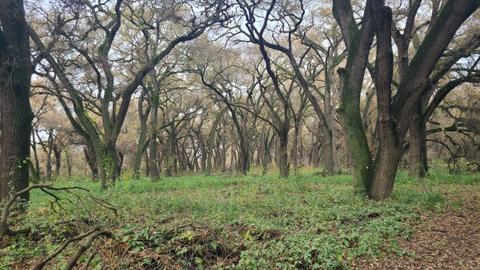
San Joaquin River National Wildlife Refuge
About this Location
The San Joaquin River National Wildlife Refuge was created in 1987 to establish habitat for the Aleutian Canada Goose, then a federally listed endangered species. Sparked by a seed-money donation from Stanislaus Audubon Society, the National Audubon Society purchased Christman Island, an integral part of the refuge. The U. S. Fish and Wildlife Service purchased additional lands and established the refuge under the Endangered Species Act and the Migratory Bird Conservation Act. The refuge has grown to encompass more than 7,300 acres, while the Aleutian Canada Goose, which experienced a taxonomic change to become the Aleutian race of the Cackling Goose, has increased its population from fewer than 800 in the 1975 to more than 200,000 today. It has since been delisted and has been replaced as the species of greatest concern on the refuge by the federally endangered riparian brush rabbit. Beginning in 2002, more than 1,000 riparian brush rabbits have been released onto the refuge and now breed natively on the refuge and on nearby lands. Though regularly threatened by winter flooding, the refuge now holds the largest population of riparian brush rabbits in the world. Following the loss of ninety-five percent of the San Joaquin Valley's riparian forests in the past century, preserved and restored habitat has been the critical factor in increasing the population of both endangered species. The USFWS and its conservation partners have planted more than 500,000 native trees and shrubs across 2,500 acres within the refuge to create the largest block of contiguous riparian forest in the San Joaquin Valley.
Features
Restrooms on site
Content from Official Website and Harold Reeve
Last updated February 10, 2024
